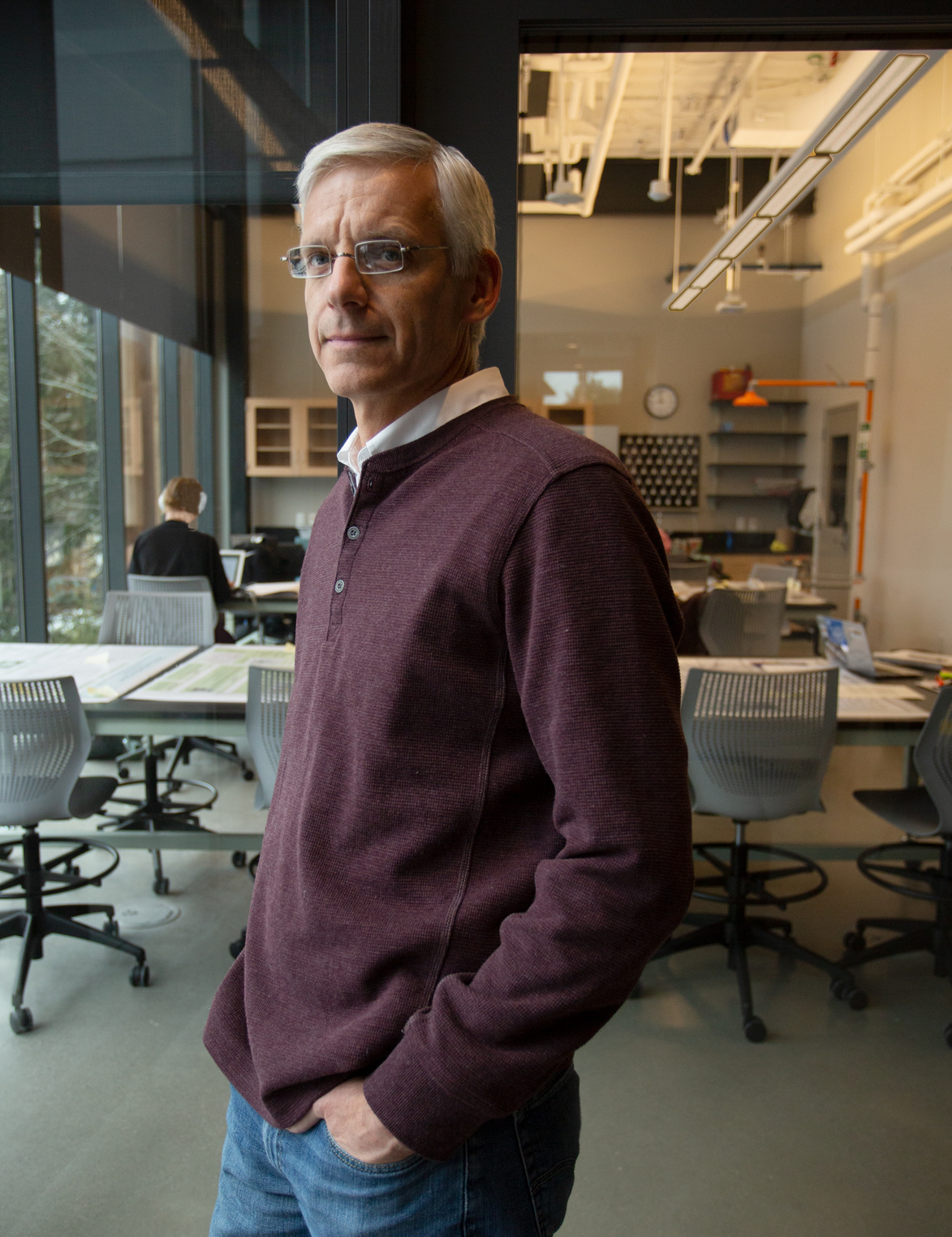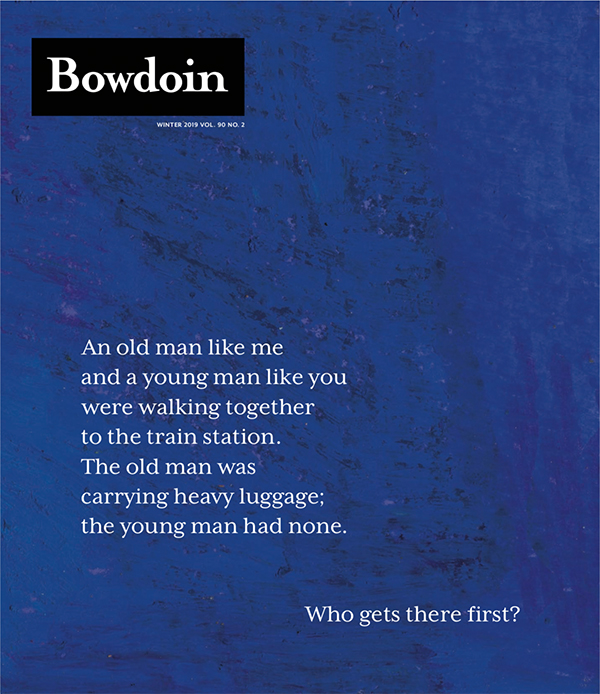Higher Ed in Flux
By Bowdoin MagazineIn For the Common Good: A New History of Higher Education in America Professor of Education Charles Dorn argues that we can’t understand what’s going on with colleges and universities today until we examine where they have come from, why they were founded, and how society has viewed their function at different points in time.
Interview by Professor of Government Paul Franco

Paul Franco: I thought I'd begin with the title, For the Common Good: A New History of Higher Education in America, specifically the second half of the title—what is new in your history and why was a new history needed?
Chuck Dorn: Higher education history has come in a number of different categories. One category fairly narrow and based on particular institutions. These are the old house histories, often by a historian that worked at the college who wrote a history for the college for a particular anniversary—so narrowly focused on one institution. The next category are the histories that are focused on a particular time period or set of institutions or a topic—so higher education during the cold war for instance, or women's higher education post world war II. Then there are the really, really expansive histories that just go by the title of “A History of Higher Education,” and those try to capture everything. What is interesting about those histories is that, as expansive as they are, they almost always focus on the more elite institutions. I was interested in writing something that was somewhat of a hybrid of all three of those categories.
Another reason, and maybe this was even more of a primary reason, is that we use this term “higher education” today and we actually think we mean something by it but you don't have to scratch the surface very much to find that there is a whole range of institutional types and kinds that comprise American higher education, from the smaller college liberal arts colleges to the big state universities to the research universities to community colleges to women's colleges to evangelical colleges to military academies, and the list goes on and on and on.
Franco: Let's look at the other half of the title, the common good—a phrase that's of great importance here at Bowdoin.
I noticed that on the second page, and on the very last page, you quote the famous lines from President McKeen about literary institutions being founded for common good not for private advantage.
How does the idea of the common good change in your view over the course of the time period that you're covering?
Dorn: I wanted to use the phrase, “for the common good”—it's one that obviously we're very familiar with in the Bowdoin community—and link it, actually, to the speech that Ray Lyman Wilbur, the president of Stanford University, gave in the early twentieth century.
One of my goals was point out that, although I am a historian at Bowdoin College, and we're quite familiar with that phrase here; that phrase has been with us for a long time. When Wilbur used it, over one hundred years after McKeen had used it, it was to describe the mission of at that point Stanford University. This idea of an institutional commitment to the common good in higher education is a long standing one. And that's one of the things that I was trying to point out at the opening of the book. The other thing that it's important to recognize is that we know of McKeen's inaugural address because he was being inaugurated as the first President of Bowdoin and we're members of the Bowdoin community. It actually turns out that scholars in the field of history of higher education are also quite familiar with McKeen's inaugural address. It's been cited in the scholarship for decades as a very good illustration of how particular population groups in the United States in the early nineteenth century thought of the mission of the colleges that existed at that point in time.
So, when McKeen says that these literary institutions are founded for the common good and not for the private advantage of those who resort to them for education, that was a widely shared ideal for the objective of colleges in the United States at the time.
And I think we see that tension in some of the debates that are occurring today around the purposes of colleges and universities. Are they to provide a kind of liberal education that enlightens and enlivens the mind, or are they to prepare students for the workforce? What exactly should these places be doing and how do we assess their effectiveness if we're not clear on what their purposes are?
This is a transformative moment in higher education. We are going to see significant changes occurring over time. That's already happening. We know for instance that we already see an increase in the higher education institutions that are struggling financially and that will probably go under. That's a relatively new thing in American society—an increase in the number of institutions that fold. That's probably going to happen given this unsustainable financial model on which higher education is currently operating. We know that there's already an increase in the number of mergers of higher education institutions. We have a lot of places in the United States where there is a local regional college down the street from a private community college down the street from another kind of college and that these places are looking into ways to merge so that they can leverage their resources.
We know that online education is becoming ubiquitous. Twenty years ago, it was a new thing, and the idea was that mooks were going to take over the world and this was going to shut down colleges and universities and instead what has happened which is precisely what has happened over time historically to a word is that colleges and universities have absorbed the previously existing places have absorbed the new technologies the sort of disruptive technologies and are using them in ways that benefit the institution and they're trying to do it in ways that fit with their historical missions. In some cases they're being more successful and in other cases they're not. Most colleges and universities in America have incorporated online learning in some form into what they do, and so that's a change, and we know that's going to continue over time, too.
Franco: You begin and end the book with discussions of the so-called crisis of higher education, and I was wondering what your book contributes to our understanding of that crisis—if it is a crisis to begin with?
Dorn: That's one of the things I try to push on a little bit—is it a crisis and what do we mean by crisis, what are we talking about when we call it a crisis? If it is a crisis, is it an unprecedent crisis? That's usually the adjective that's used to describe it. I wanted to shed some light through a historical lens on what's happening in the United States today in higher education. And what I try to show through four chronological periods is that we have had moments of transformation and American society in the past, transformative moments for American higher education.
Perhaps people at the time define them as a crisis, but as we look back what we can see is that they're in fact elements of transformation that led to change.
It was not as if the transformation or the crises led to a collapse, and often what we are hearing today is that the crisis is going to lead to a collapse. If you take a look at the titles of some of the books that have been published on the “crisis in higher ed,” they go by the title of things like, “The End of College.” They might as well bring the wrecking balls out of the quad knock down Hubbard Hall because it's all going to be done online or it's all going to be done through certificates or something like that. If you take the long view, the historical view, of American higher education, there's absolutely no reason to believe that's going to happen.
